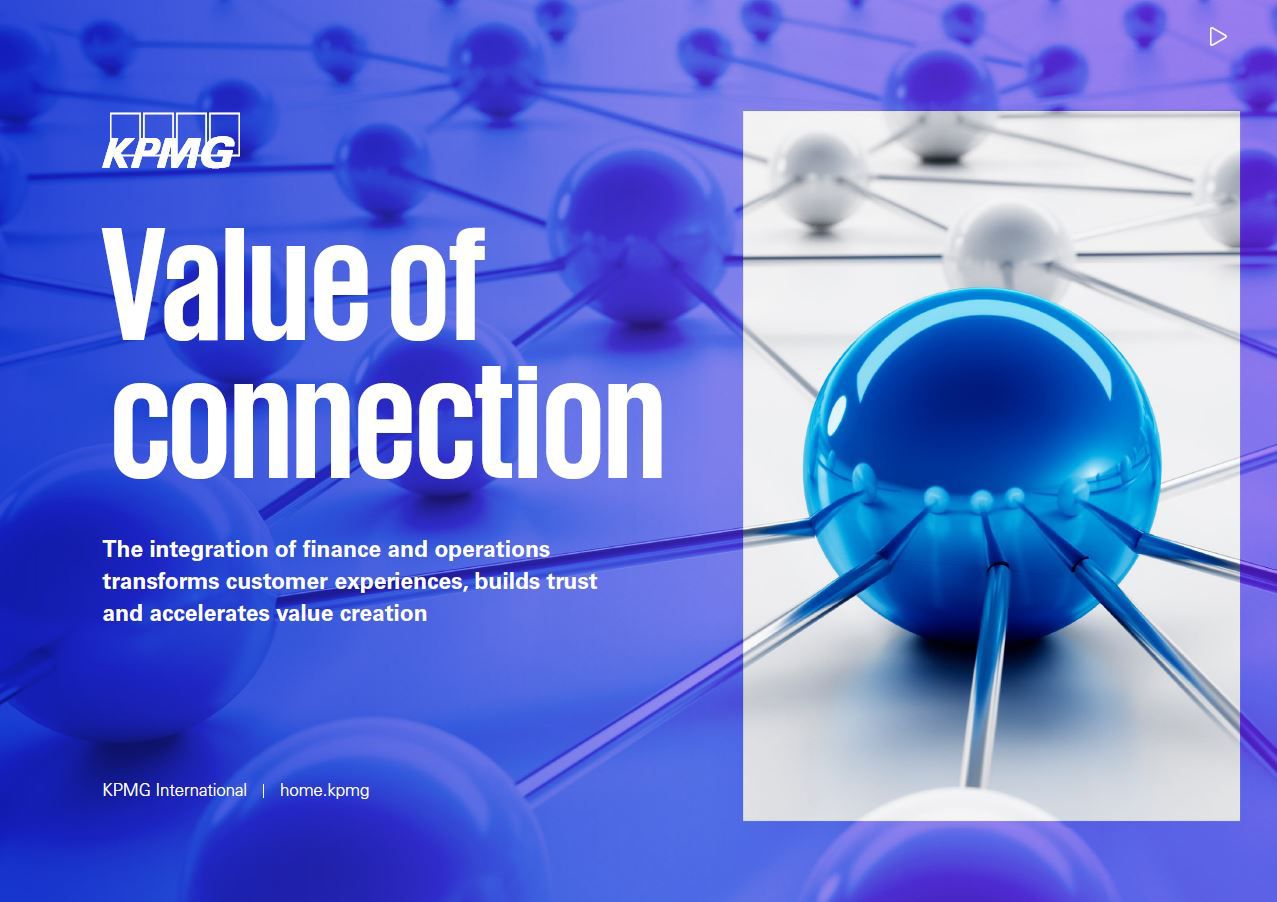Operations leaders struggle to utilise data effectively. Just 36% are 'very satisfied' with their ability to combine and draw insights from data across multiple business functions, according to our global KPMG survey. Further down the data-use chain, only 38% are 'very satisfied' with their ability to make informed decisions based on data. And just 44% are 'very satisfied' with their ability to use data to support financial and operational analytics.
We spoke to two operations leaders to understand how they are harnessing new technology and data to bring key business processes up to the mark.
The IT and consulting company rewiring procure-to-pay
Global information technology services and consulting company DXC has more than 130,000 employees and generated a whopping US$17.7bn in revenue in 2021. It spends billions of dollars on IT equipment and services every year. Little wonder that transforming how they procure and pay for goods is a key priority for chief operations officer Chris Drumgoole.
“We had, and still do have, numerous purchasing tools and systems around the world, some of which are highly automated and some highly manual,” he explains. “This meant that we could not get a holistic view of how much we spend and who we spend it with. This leads to increased costs because you spend more for the same commodity with one supplier than another, without knowing it. It was also difficult to get an idea of where delivery delays were affecting supply.”


To correct this, the business is centralising its procurement infrastructure which will enable its operations team to instantly generate data that allows comparison of different prices, delivery times and geographies. Once DXC is able to lay out its insights in a clear framework, purchasers will be able to make better-informed purchasing decisions and potentially negotiate more favourable terms.
Just
43%
of operations leaders are 'very satisfied' with their degree of visibility of their entire supply chain.
Importantly, local purchasers will still have autonomy around procurement. “We want global visibility but local execution because smaller local purchasers have greater agility and can get a better deal than purchasers in a big central team. That said, centralised systems also give us control to an extent, which enables us to comply more easily with legal directives such as sanctions.”
Only
44%
of operations leaders say their procure-to-pay process is fully connected across finance and operations.
Close collaboration between operations and finance is essential to the restructuring of the procure-to-pay system. “Operations teams focus on how we can drive efficiencies; how can we get key equipment more quickly; and how we get clarity on our supply chain,” says Drumgoole.
“Finance supports this but also looks at how these changes might impact costs. The teams are also integrated for day-to-day purchases. The team that cuts the cheque or issues the wire is located in finance, but they are integrated very closely with the team in operations that makes the purchase. It's seamless.”
Implementing a new organisation-wide system in a global business is challenging. However, Drumgoole shares that cultural issues have presented the largest obstacle. “The company's mission statement has always been to put the customer first, and so, naturally, our employees were nervous that these changes would impede their ability to serve their customers.”
“You need to go team by team, almost person by person, and explain that the changes you are making will benefit them and our customers in the long run. It's proving successful so far.”


The company tapping data to feed a smoother supply chain
If you indulge in the occasional Oreo sandwich or Cadbury chocolate bar, then Mondelēz International should be on your radar. The global confectionary and food manufacturer, with a presence in more than 150 countries and an estimated net revenue of US$29 billion in 2021, owns iconic brands such as Oreo, Ritz and Cadbury Dairy Milk. And it is taking a ‘byte’ out of new data and advanced technology to transform the way people snack.
Frank Cervi, chief supply chain strategy officer, shares that Mondelez makes projections that determine the scale and timing of production for each product line. They are also used to programme high- and low-intensity periods for each factory.
Less than half (43%)
of operations leaders are very satisfied with their ability to leverage financial and operational data from across the organization for planning purposes
“Historically, these forecasts were determined by manually analysing hundreds of spreadsheets and then going through lots of internal discussions,” he says. “Now, we're using a set of sophisticated, machine-generated algorithms to generate these estimates. It compares everything you forecast in the past to what actually transpired.”
The algorithms are set to analyse internal data such as historical demand levels. They also determine the optimum conditions for promotional launches, based on external data such as weather forecasts and the timing of major sporting or entertainment events. Using data analysis, the company has managed to improve the accuracy of its demand signals, two months ahead of time, from 70% (which Cervi says is the industry benchmark) to around 75%. The benefits are even greater for longer-term forecasting, a notoriously difficult undertaking given the wider range of possible outcomes.
Cervi believes there is greater scope to improve its accuracy by systematically collating and feeding in larger supplies of data. “In the future, I imagine being able to scrape all point-of-sale data from supermarkets, as well as social-media metrics, to understand whether one of our brands is trending. This could help us to understand demand surges and generally fine-tune our forecasting.”
Investing in digital technology comes with its set of challenges. “With digital investments you're often not 100% clear on the benefits. Yet you know you need to make it, or you will be left behind. We managed to overcome this hurdle and secured the investment because we have a visionary head of supply chain and a dynamic finance team who worked together to understand the benefits of the investment, both financial and in attracting and retaining talent.”
Key takeaways
In both case studies above, close collaboration between operations and finance proved vital in planning refinements and understanding the motivations and intentions behind them.
However, this is something that many businesses still struggle with today. Only 43% of surveyed operations leaders are 'very satisfied' with the extent of their collaboration with counterparts in finance. And just 46% of operations leaders are 'very satisfied' with the degree of collaboration between finance and operations team members.
Read our main report to find out how operations and finance can power business transformation through cross-collaboration.



